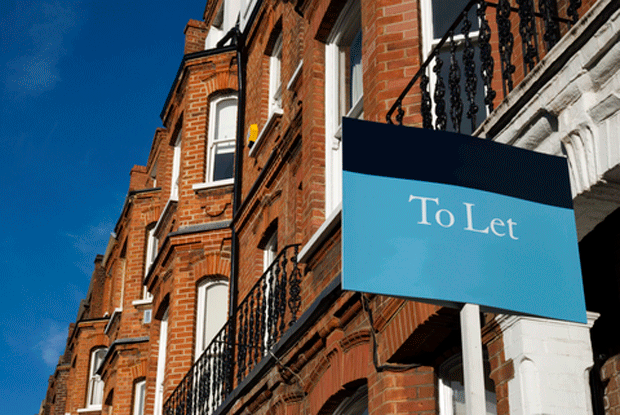Mortgages for superyacht crew don’t come without complications. You’ve worked hard for the last couple of years, saved a good sum of money, and you are ready to take your first step onto the property ladder. Whether investing or just getting your own space to return to when you take a holiday home, we all know securing a mortgage as superyacht crew can come with complications and lots of questions.
Where do you start? Can I get even get a mortgage when working on a superyacht? Who do I talk to? Today Superyacht Content talks with Martyn from Caboodle, a longstanding partner of CrewFO. We ask him the common questions he gets from yacht crew when it comes to getting a mortgage. Martyn is an expert in this field and understands the complexities and difficulties British yacht crew face when securing a mortgage. We asked him the most commonly asked questions superyacht crew have when trying to get their first mortgage.

How much of a deposit will I need when buying a house?
Lenders will require a minimum of a 5% deposit for residential properties. For a Buy To Let investment property, you will need a minimum of 25%
Can I borrow money for the deposit?
This is usually not acceptable. Lenders are happy to use ‘gifts’ from family members or friends towards your deposit, provided it is a genuine gift. Lenders will require a ‘gifted deposit’ letter in these circumstances, which must satisfy their requirements.
What is the difference between a Residential Mortgage and a Buy To Let Mortgage?
A residential mortgage is available on a house a person is planning to live in personally. You may not rent this to anyone when it is unoccupied. In some circumstances, lenders will allow you to have friends or family stay in the property whilst they are overseas. However, they can’t sign up for a formal tenancy agreement or switch the utility bills into their names.
A Buy To Let mortgage is for a property that the applicant does not plan to live in personally and is only looking to buy as an investment. You will need to rent the property using an Assured Shorthold Tenancy agreement. With this type of mortgage contract, the applicant and/or their family cannot live there.
Can I rent a property on a Buy to Let mortgage on Airbnb?
Although some lenders in the mortgage market will allow this, the restricted number that will provide mortgages for superyacht crew prefer you to rent the property on a more long-term basis.
Is there a minimum income requirement for me to get a mortgage? And how much will I be able to borrow?
There is no minimum income requirement for Residential and Buy To Let Mortgages, although the amount earned will influence the amount of mortgage available in most instances.
- Residential–Most lenders will consider mortgage loan sizes of up to 4.5 times your gross annual income. Based on earnings of £50,000 sterling per year, in theory, a mortgage of £225,000 may be available. This figure is reduced if the mortgage term is short, if there are any other debts or commitments such as car loans and credit cards, or if the credit profile/rating isn’t brilliant.
- Buy To Let–Things are a little different on this type of mortgage as they primarily link the loan amount to the rental income generated by the property and not by the personal income.

How do lenders treat income when paid to you in a foreign currency?
Great question! Many lenders won’t accept incomes paid in foreign currencies, so options are limited. The lenders that will help all have a different calculation. When calculating the sterling equivalent, the best options will take the mid-range exchange rate and allow 100% conversion. Other lenders will reduce this calculation by 10% or sometimes as much as 25% to allow for fluctuations in exchange rates, which can seriously affect the mortgage amount.
You mentioned on BTL mortgage. The rental income dictates the loan amount. How is that calculated?
Again, it varies from lender to lender. Still, as a rough rule of thumb, the rental income needs to cover the loan amount by 125% using a stress test interest rate of 5.5% (irrespective of the product interest rate, which is likely to be significantly lower).
Example: For a BTL loan size of £100,000, the rental income would need to cover the interest each year calculated at 5.5% (i.e. £5,500 per annum) with 125% cover (i.e. £6,875 per annum), which equates to a minimum gross rental income of £573pm.

What is the maximum loan to value currently available?
The maximum a ‘yachtie’ can borrow on a residential mortgage is 95%. It might also be possible to use the government ‘Help to Buy scheme. On a Buy To Let mortgage, the maximum is 75% LTV, although this is often reduced to 65% LTV when buying a new build property.
Is there a minimum age and maximum age for mortgages?
Generally, the minimum age for both Residential & BTL mortgages is 18, although some lenders have a minimum requirement of 21. The maximum age we can take a mortgage out is 70-75 for residential mortgages and 80-85 for Buy To Let mortgages.
Is there a minimum time yacht crew need to be working for before they can get a mortgage?
Again, this varies from lender to lender, but you will need to have at least 6 months of continuous employment working on yachts. Although some lenders are more flexible regarding employment history and time in a job, they are very strict regarding where the employer is based.
Can superyacht crew still get a mortgage if they are a first-time buyer and/or a first-time landlord?
Yes, some lenders will consider both situations for superyacht crew.
How has the pandemic affected the chances of yacht crew securing a mortgage?
In fairness, it hasn’t really affected superyacht crew. Unless the yacht owner has furloughed all crew, then this is a major issue. However, if the applicant is still working on normal terms, it isn’t a problem even if their rotation has changed.
What documents will I need to get a mortgage?
Unfortunately, when applying for a mortgage, there are several documents you will need to have to hand. As we know how difficult it can be for yacht crew to send over documents, we try to make things as easy as possible. We use electronic ID & Address verification where we can. If this is successful, it means we don’t need to see a passport or driving licence. However, we will need to see your current Seafarer Agreement, payslips, bank statements, proof of deposit and occasionally, your annual tax returns.
Is a face-to-face meeting required to arrange the mortgage?
No. Most mortgages we have arranged for ‘yachties’ are undertaken completely over the phone or by email. Although sometimes, we would love to fly out to the Caribbean and meet in person, it isn’t necessary!
You have answered all our current mortgage questions. Do you have any other useful advice for us?
We have put together a guide called ‘How to Get Mortgage Fit’, which we would encourage everyone to read before applying. Following the simple points in this guide will give you the best chance to get your desired outcome.
For more articles on crew finances, click here.
About CrewFO
CrewFO has been helping yacht British yacht crew with their finances since 2015. For more information on the company, click here, for membership options, click here, or if you are looking for advice on securing your next mortgage, send them an email at info@crewfo.com.
You can find out the latest financial updates for superyacht crew by following them on Instagram @crewfo or liking them on Facebook @crewfo





.gif)








.gif)





